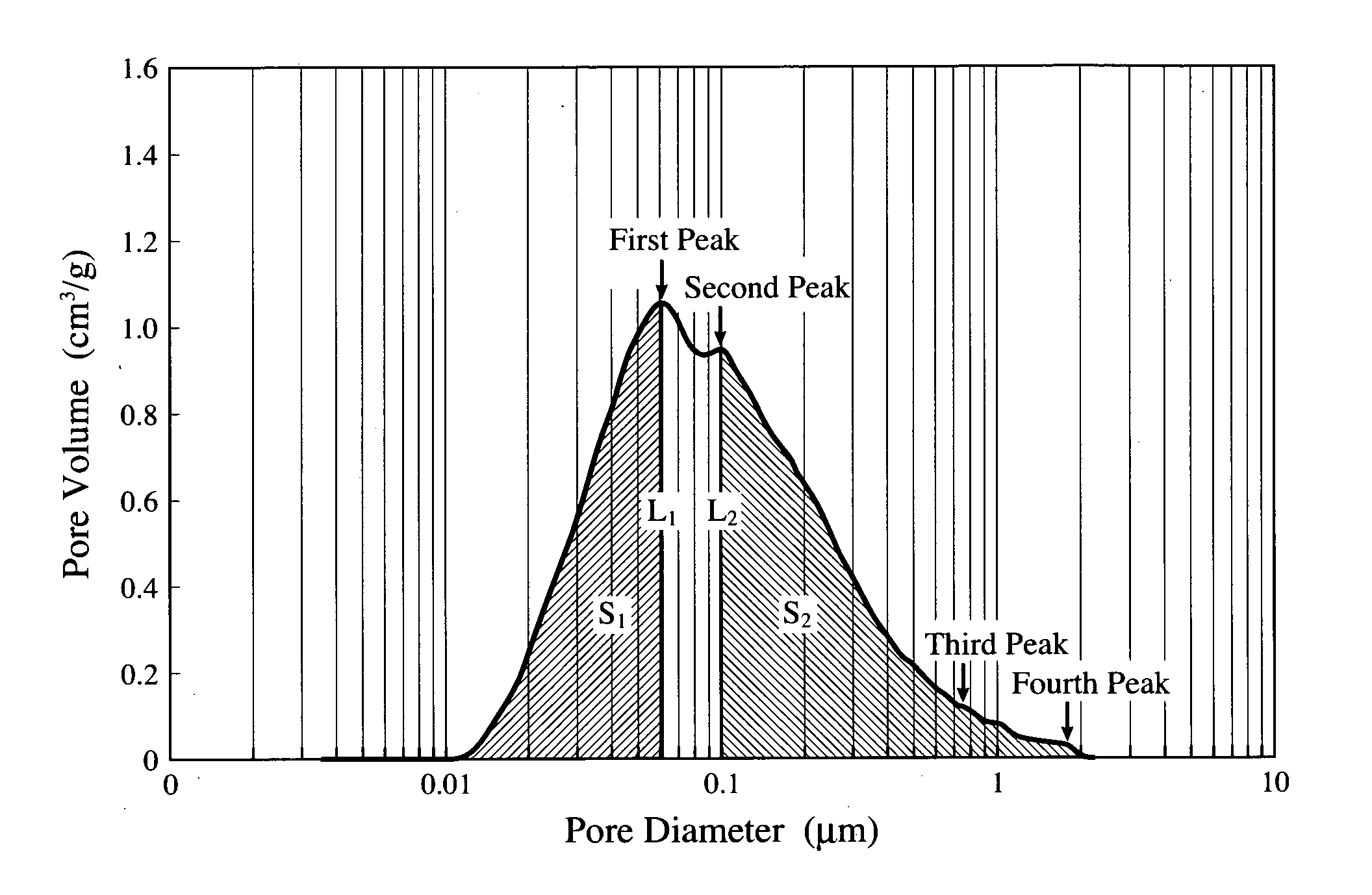Polyolefin composition, its production method, and a battery separator made therefrom
a technology of polyolefin composition and production method, which is applied in the field of polyolefin composition, can solve the problems of reducing the compression resistance of the separator, affecting the properties, productivity and safety of the battery, and the performance of the membrane, so as to improve the permeability, meltdown properties, and compressive characteristics, and improve the permeability. , the effect of improving the permeability
- Summary
- Abstract
- Description
- Claims
- Application Information
AI Technical Summary
Benefits of technology
Problems solved by technology
Method used
Image
Examples
example 1
[0253](1) Preparation of First Polyolefin Solution
[0254]Dry-blended were 99.8 parts by mass of a first polyethylene composition comprising 2% by mass of ultra-high-molecular-weight polyethylene (UHMWPE) having a weight-average molecular weight (Mw) of 2.0×106, a molecular weight distribution (Mw / Mn) of 8, a melting point (Tm) of 135° C., and a crystal dispersion temperature (Tcd) of 100° C., and 98% by mass of high-density polyethylene (HDPE) having Mw of 3.0×105 and Mw / Mn of 8.6, Tm of 135° C., and Tcd of 100° C., and 0.2 parts by mass of tetrakis[methylene-3-(3,5-ditertiary-butyl-4-hydroxyphenyl)-propionate]methane as an antioxidant. The first polyethylene composition had Mw of 3.3×105 and Mw / Mn of 9.4, Tm of 135° C., and Tcd of 100° C. 40 parts by mass of the resultant mixture was charged into a strong-blending double-screw extruder having an inner diameter of 58 mm and L / D of 52.5, and 60 parts by mass of liquid paraffin [50 cst (40° C.)] was supplied to the double-screw extrude...
example 2
[0269](1) Preparation of First Polyolefin Solution
[0270]A first polyolefin solution was prepared in the same manner as in Example 1.
[0271](2) Preparation of Second Polyolefin Solution
[0272]Dry-blended were 100 parts by mass of a polyethylene composition comprising 50% by mass of UHMWPE, and 50% by mass of HDPE, and 0.2 parts by mass of the above antioxidant. 15 parts by mass of the mixture was charged into the double-screw extruder, and 85 parts by mass of the liquid paraffin was supplied to the double-screw extruder via a side feeder. Melt-blending was conducted at 210° C. and 200 rpm to prepare a second polyolefin solution. The second polyethylene composition had Mw of 1.2×106 and Mw / Mn of 18.7, Tm of 135° C., and Tcd of 100° C.
[0273](3) Production of the Microporous Polyolefin Membrane
[0274]A three-layer, microporous polyolefin membrane was produced in the same manner as in Example 1, except that the first and second polyolefin solutions were extruded at a thickness ratio of firs...
example 3
[0275](1) Preparation of First Polyolefin Solution
[0276]A first polyolefin solution was prepared in the same manner as in Example 1.
[0277](2) Preparation of Second Polyolefin Solution
[0278]Dry-blended were 100 parts by mass of a second polyolefin comprising 30% by mass of UHMWPE having Mw of 5.0×106, Mw / Mn of 8.2, Tm of 135° C., and Tcd of 100° C., and 70% by mass of HDPE, and 0.2 parts by mass of the above antioxidant. 25 parts by mass of the mixture was charged into a double-screw extruder, and 75 parts by mass of liquid paraffin was supplied to the double-screw extruder via a side feeder. Melt-blending was conducted at 210° C. and 200 rpm to prepare a second polyolefin solution. The second polyethylene composition had Mw of 8.1×105, Mw / Mn of 17.2, Tm of 135° C., and Tcd of 100° C.
[0279](3) Production of the Microporous Polyolefin Membrane
[0280]A three-layer, microporous polyolefin membrane was produced in the same manner as in Example 1, except that the first and second polyolefi...
PUM
| Property | Measurement | Unit |
|---|---|---|
| Time | aaaaa | aaaaa |
| Percent by mass | aaaaa | aaaaa |
| Percent by mass | aaaaa | aaaaa |
Abstract
Description
Claims
Application Information
 Login to View More
Login to View More - R&D
- Intellectual Property
- Life Sciences
- Materials
- Tech Scout
- Unparalleled Data Quality
- Higher Quality Content
- 60% Fewer Hallucinations
Browse by: Latest US Patents, China's latest patents, Technical Efficacy Thesaurus, Application Domain, Technology Topic, Popular Technical Reports.
© 2025 PatSnap. All rights reserved.Legal|Privacy policy|Modern Slavery Act Transparency Statement|Sitemap|About US| Contact US: help@patsnap.com


